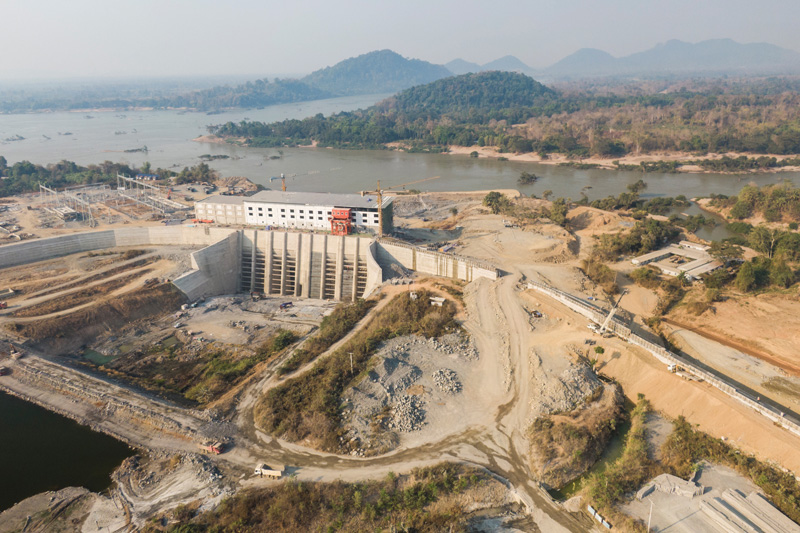Damning Link between a Bangkok Mall and Injustice in Laos
Six years ago, Central Embassy, Bangkok’s newest shopping mall, celebrated its opening with aplomb, attracting several thousand local celebrities to a glitzy affair. This luxurious and futuristic-looking mall was described by Travel & Leisure as a “monster of a shopping complex”. During the same month, the World Wide Fund for Nature (WWF) warned that the construction of the Don Sahong Dam in southern Laos would endanger the survival of freshwater Irrawaddy dolphins and called for a suspension of the project.
These two events, occurring 870km apart and in different countries, might appear to be unrelated at first glance. However, our article shows that they are linked because they form part of the complex web that is Bangkok’s electricity consumption.
To partially sate Thailand’s ever-increasing thirst for energy, Thai companies and state-owned enterprises collaborate with the Lao government to build more hydropower dams in Laos and import the electricity into Thailand. Much of this electricity is used in Bangkok. Middle-class and upper-class residents of the Thai capital enjoy cheap (and the ever-increasing consumption of) power while company executives and major shareholders of Thai companies in the energy, real estate, construction and finance sectors reap large profits – as do Lao government leaders. Simultaneously, local rural communities and wildlife in Laos bear the brunt of the environmental and social damage caused by these dams. Some communities are forced to resettle and are often worse off afterwards.
However, few Bangkok residents are aware of the injustices they are helping to perpetuate, and rarely do they question the sources of their electricity. While they have protested against dams planned for Thailand, Thais have, mostly, been silent when it comes to dambuilding in Laos. Some Thai villagers sued their government for signing an agreement to purchase power from a new hydroelectric dam under construction on the Lower Mekong River at Xayaburi in northern Laos, but all of them lived outside of Bangkok in northeast Thailand.
Given how little opportunity exists for dissent in Laos, Dr Danny MARKS and Dr Jun ZHANG, Assistant Professors at the Department of Asian and International Studies of CityU’s College of Liberal Arts and Social Sciences, suggest in this article that fomenting further dissent in Bangkok by exposing the perverse logic and injustices behind the construction of dams in Laos, and the purchase of power from them, could be one avenue to begin addressing these inequalities.
Publications and achievements
Marks, D., & Zhang, J. (2019). Circuits of Power: Environmental Injustice from Bangkok’s Shopping Malls to Laos’ Hydropower Dams. Asia Pacific Viewpoint , 60(3), 296-309. DOI: 10.1111/apv.12242



